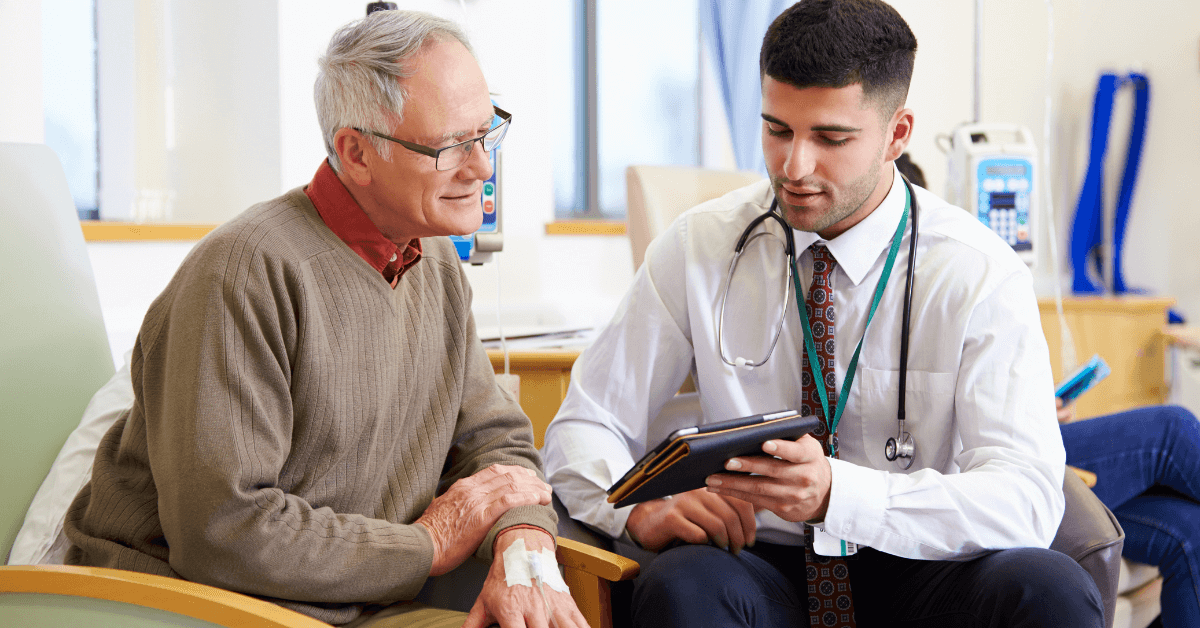If you are experiencing symptoms like rectal bleeding, itching, or discomfort, you may be wondering, how are hemorrhoids diagnosed? Many people feel anxious or embarrassed about discussing these symptoms, which can prevent them from seeking the medical attention they need. However, getting an accurate diagnosis is the first and most important step toward effective treatment and relief. This comprehensive guide will walk you through the process, explaining the various methods doctors use and what you can expect during your appointment.
Your Doctor’s Initial Assessment
The diagnostic process begins with a conversation. When you visit your doctor, they will start by taking a detailed medical history. They will ask you about your specific symptoms, including when they started, their severity, and any factors that seem to make them better or worse. Furthermore, your doctor will ask about your bowel habits, diet, and lifestyle, as these can all be contributing factors to hemorrhoids.
For instance, they may ask about your frequency of bowel movements, whether you experience straining, or if you have a history of constipation or diarrhea. They may also ask about your family history and any other existing medical conditions. This initial discussion provides crucial context and helps your doctor determine the most likely cause of your symptoms. As a matter of fact, many people find that simply talking to a professional helps alleviate some of their anxiety.
Physical Examination: A Critical First Step
A physical examination is a cornerstone of the diagnostic process. This is where your doctor will visually inspect the area to look for signs of hemorrhoids. External hemorrhoid examination is typically straightforward and non-invasive.
Visual Inspection: Your doctor will ask you to lie on your side or bend over so they can get a clear view of the external area. They will look for any visible signs of external hemorrhoids, such as swollen veins, lumps, or inflamed tissue. They will also check for other conditions that can cause similar symptoms, such as anal fissures or skin tags.
Because external hemorrhoids are located outside the anal opening, they are usually easy to identify. This simple visual check is often all that’s needed to confirm their presence. However, your doctor will likely want to check for internal hemorrhoids as well.
Internal Hemorrhoid Examination
Since internal hemorrhoids are inside the rectum, a different set of methods is necessary for their diagnosis. Therefore, the question, how are hemorrhoids diagnosed, often leads to a discussion of internal examination techniques.
- Digital Rectal Exam (DRE): During this exam, your doctor gently inserts a lubricated, gloved finger into your rectum. They feel for any hard lumps or abnormalities that might indicate internal hemorrhoids. While this part of the exam may feel a bit uncomfortable, it is quick and painless. It allows your doctor to feel for any enlarged veins that may not be visible from the outside.
- Anoscopy: For a more definitive diagnosis of internal hemorrhoids, your doctor may perform an anoscopy. This procedure involves the insertion of a short, rigid tube called an anoscope into the anal canal. The anoscope is equipped with a light, which allows your doctor to get a clear, magnified view of the rectal lining. They can easily identify the size and grade of any internal hemorrhoids. The anoscopy procedure is also quick and typically causes only minor discomfort, if any.
- Proctoscopy: A proctoscope is slightly longer than an anoscope. It provides a view of the entire rectum and the lower part of the colon. A doctor might use this tool to examine the area more thoroughly. The process is similar to anoscopy and is a routine part of a thorough examination.
These internal examinations are essential because they provide a complete picture of your condition and help rule out other potential issues. They are an important part of a complete hemorrhoid diagnosis.
Why Are Other Tests Needed for Hemorrhoids?
While a physical exam and anoscopy are often sufficient, your doctor may recommend further diagnostic tests, especially if they suspect another condition or if your symptoms are more severe. For this reason, you should understand that diagnosing hemorrhoids can sometimes extend beyond a simple exam.
- Flexible Sigmoidoscopy: If you are over a certain age (usually 50, but sometimes younger depending on symptoms and risk factors) or if your doctor has concerns about other conditions, they may recommend a flexible sigmoidoscopy. This procedure uses a flexible tube with a camera to examine the lower part of your colon and rectum.
- Colonoscopy: In some cases, a colonoscopy may be necessary. This procedure is similar to a sigmoidoscopy but allows the doctor to view the entire length of the colon. Doctors often recommend a colonoscopy for patients over 50 or for those with a family history of colon cancer because it detects polyps and cancer. The procedure does not target hemorrhoids specifically but helps rule out more serious causes of rectal bleeding.
Doctors primarily use these additional tests to ensure that bleeding or other symptoms do not come from a more serious underlying condition. They are a proactive step in a thorough medical evaluation and provide peace of mind.
The Importance of a Correct Diagnosis
Getting a correct diagnosis is crucial for several reasons. First, it ensures you receive the right treatment. Treating hemorrhoids with over-the-counter remedies may not work if you actually have an anal fissure or a different condition. Second, a proper diagnosis confirms that your symptoms are not a sign of a more serious illness like colorectal cancer. The symptom overlap between hemorrhoids and other conditions makes a professional medical evaluation absolutely necessary.
Furthermore, a correct diagnosis allows your doctor to recommend the most effective treatment plan, which may include dietary changes, lifestyle modifications, or specific medical procedures. A clear understanding of your condition empowers you to take control of your health.
Conclusion: How are hemorrhoids diagnosed?
Doctors typically diagnose hemorrhoids quickly and straightforwardly, making this process a vital step toward feeling better. While it may feel uncomfortable to talk about, your doctor’s priority is to help you. The combination of a medical history, a physical exam, and potentially a more in-depth look with an anoscopy provides a clear and accurate diagnosis. Do not let embarrassment or fear prevent you from seeking help. A proper diagnosis not only provides effective relief but also lets doctors identify and treat more serious conditions early. Take that first step today and talk to your doctor about your symptoms.



